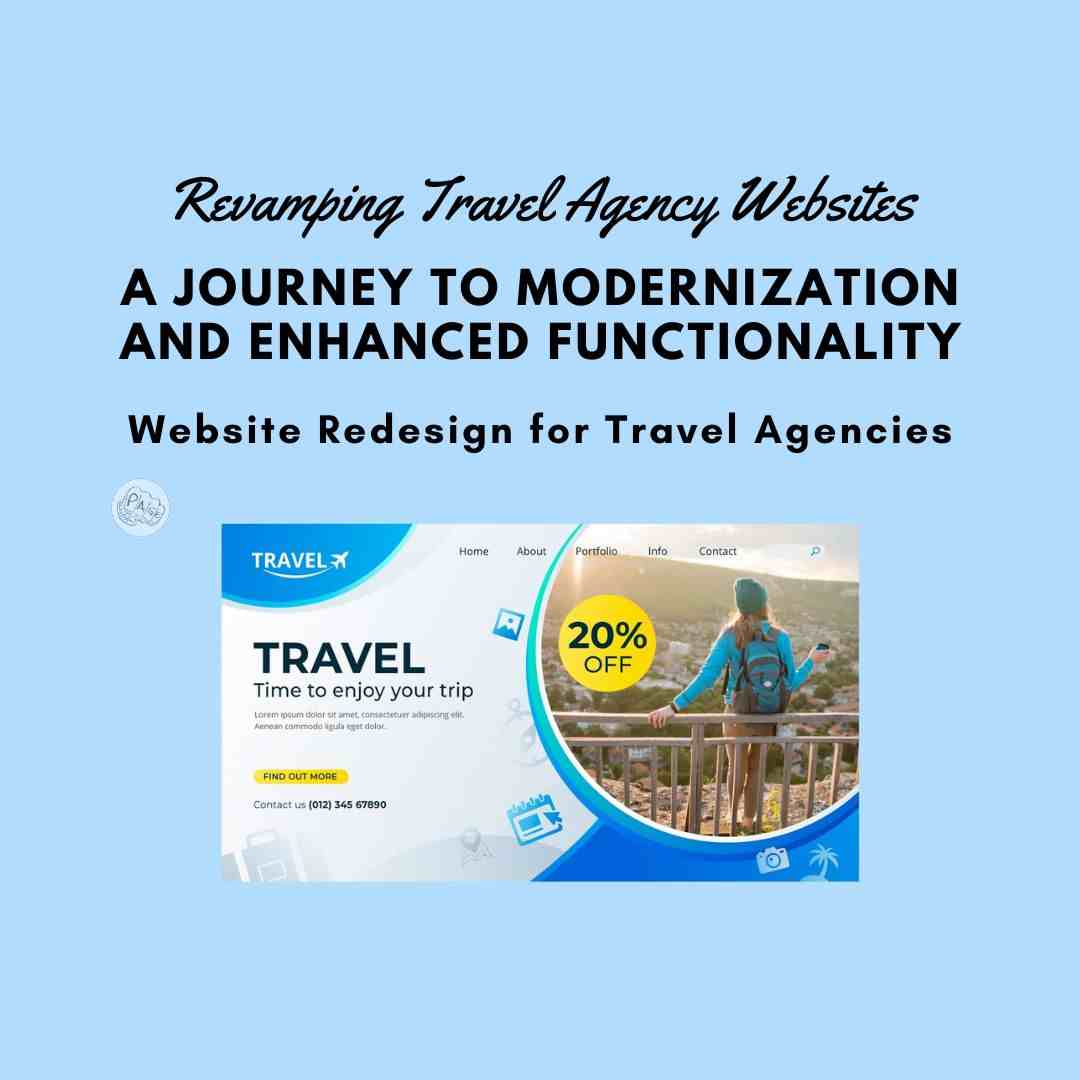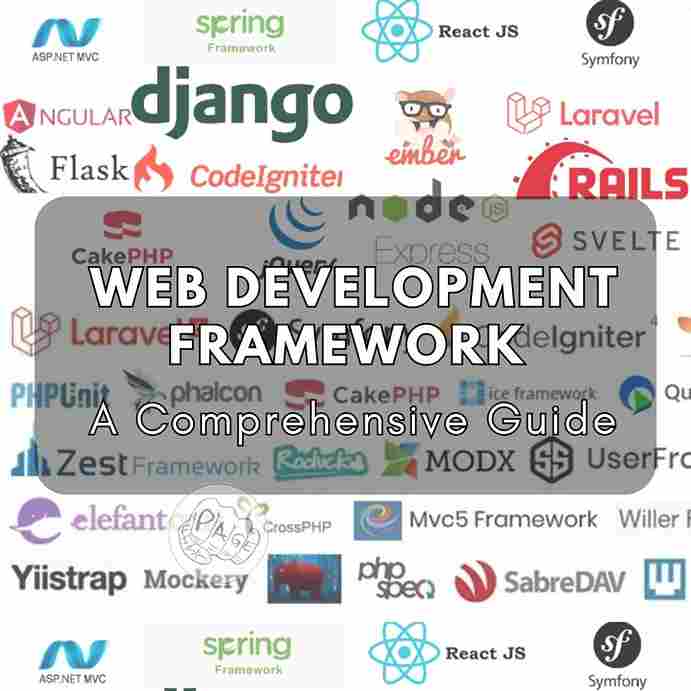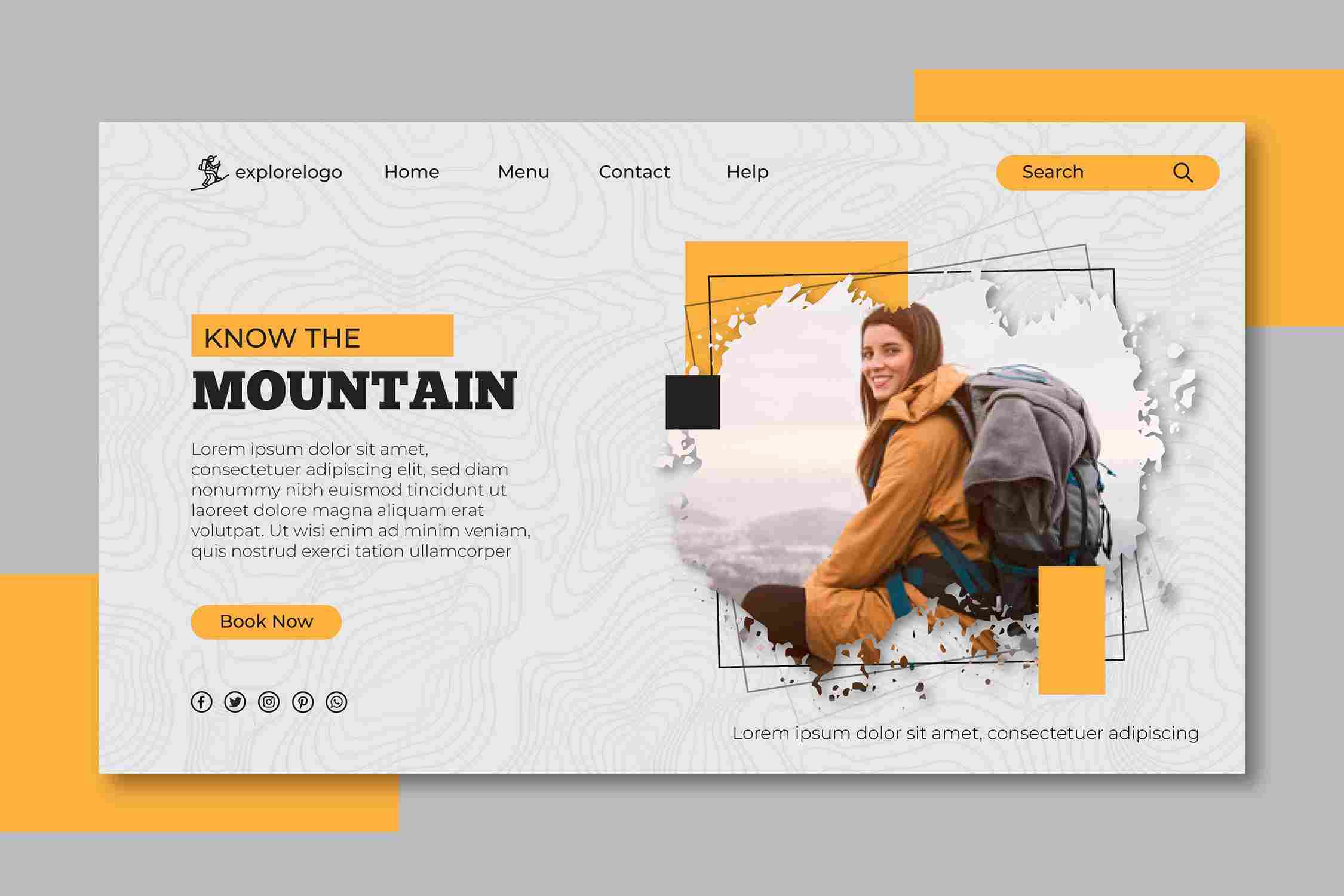Revamping Travel Agency Websites: A Journey to Modernization and Enhanced Functionality
Explore the art of website redesign for travel agencies! Discover insights on revamping existing travel agency websites for a fresh, modern look and improved functionality.
Introduction
In the fast-paced world of travel, where wanderlust meets technology, travel agencies need to stay ahead of the game. As we all know, the digital realm is the new frontier for businesses, and travel agencies are no exception. A visually appealing and highly functional website is an absolute necessity. It's the virtual face of your travel agency, your digital storefront, and the first impression you make on potential clients.
So, how do you make sure your travel agency website stays fresh, modern, and functional? The answer is simple: website redesign. In this article, we're diving headfirst into the world of website redesign for travel agencies, providing you with insights on the web development process to give your existing website the facelift it deserves.
The Importance of Website Redesign
Let's begin by discussing why a website redesign is vital for travel agencies in today's digital landscape.
Catching the Eye of Modern Travelers
Today's travelers are tech-savvy and discerning. They expect user-friendly websites with captivating designs. An outdated website might give potential clients the wrong impression that your agency is not keeping up with the times. A modern, fresh look can capture their attention and spark their interest.
Improved Functionality
A well-designed website is not just about aesthetics; it's also about functionality. Visitors want an easy and efficient booking process, access to travel information, and responsive design for mobile devices. A website redesign can revamp these functionalities, providing your clients with a seamless experience.
Search Engine Optimization (SEO)
Search engines love fresh and relevant content. When you redesign your website, you have the opportunity to optimize it for search engines. This can improve your website's visibility, attracting more organic traffic.
Staying Competitive
The travel industry is highly competitive. Redesigning your website can give you an edge over competitors. A modern, responsive site can lead to increased bookings, more inquiries, and ultimately, a boost in revenue.
The Web Development Process
Now that we understand the importance of website redesign for travel agencies, let's delve into the web development process.
Assessment and Planning
-
Identify Goals: Determine what you want to achieve with your website redesign. Is it increased traffic, more bookings, or improved user experience?
-
Competitor Analysis: Study your competitors' websites to get inspiration and identify areas where you can outperform them.
-
Audience Research: Understand your target audience's preferences and expectations. What do they look for in a travel agency website?
-
Content Evaluation: Analyze your existing content and decide what needs to be updated, removed, or added.
-
Budget and Timeline: Set a realistic budget and timeline for your redesign project.
Design and Development
-
Wireframing: Create wireframes to visualize the website's layout and structure.
-
Responsive Design: Ensure that the design is responsive, adapting to various screen sizes and devices.
-
Content Creation: Develop high-quality, engaging content that reflects your travel agency's unique offerings.
-
User Interface (UI) Design: Craft an intuitive and visually appealing interface for your website.
-
Development: Build the website using modern web technologies, keeping in mind factors like page load speed and security.
-
Testing: Thoroughly test the website for functionality, performance, and compatibility across different browsers and devices.
Optimization and Launch
-
SEO Integration: Implement on-page SEO strategies, such as optimizing meta tags, headings, and images.
-
Performance Optimization: Improve page load speed and overall site performance.
-
Content Migration: Migrate existing content to the new website, ensuring no data is lost.
-
Testing and Debugging: Conduct final tests and address any remaining issues.
-
Launch: Once everything is in place, it's time to launch your redesigned website.
Post-Launch Maintenance
-
Monitoring: Continuously monitor your website's performance, user feedback, and traffic.
-
Updates and Maintenance: Regularly update content and maintain the website to ensure it stays fresh and functional.
-
Feedback and Improvements: Gather user feedback and make improvements based on their suggestions.
-
Marketing: Promote your redesigned website through various digital marketing channels.
Conclusion
In the ever-evolving landscape of travel agency websites, staying up-to-date is essential. Website redesign for travel agencies is not just a cosmetic change; it's a strategic move to capture the attention of modern travelers, improve functionality, and stay competitive in the industry.
Remember, the web development process involves assessment, planning, design, development, optimization, and continuous post-launch maintenance. By addressing these steps and considering the needs and preferences of your target audience, you can embark on a successful website redesign journey.
So, if you're still running an outdated travel agency website, it's time to give it a fresh, modern look and improved functionality. Stay ahead of the curve, attract more clients, and watch your business take flight in the digital era!
Website Redesign for Travel Agencies: Provide insights on the web development process for giving existing travel agency websites a fresh, modern look and improved functionality.
Share This Post
Related Articles
Choosing the Perfect Web Development Framework: A Comprehensive Guide
Discover the ideal web development framework for your project! Dive into a comprehensive guide on popular options like Django, Next.js, Yii, ASP.NET MVC, and more. Make the right choice today!
What is a Portfolio Website?
A portfolio website is a digital showcase of your skills, achievements, and projects. It allows you to present your work to potential clients, employers, or collaborators in a professional and engaging way. A portfolio website can help you stand out from the crowd, demonstrate your expertise, and increase your visibility online.
E-Commerce Website Development: Turning Clicks into Cash
Discover the art of turning virtual clicks into real cash with effective e-commerce website development. Learn strategies to boost your online sales and revenue!
WordPress Plugins: A Guide for Beginners
WordPress plugins are software components that extend the functionality and features of the WordPress platform. They can help you create and manage various types of websites, such as blogs, e-commerce, portfolios, forums, and more. WordPress plugins are easy to install and customize, and there are thousands of free and premium options available for different purposes and niches. Some of the most popular WordPress plugins are WooCommerce, Yoast SEO, Elementor, Jetpack, and Contact Form 7.
A Beginner's Guide to Using Git for Version Control in Web Development Projects
Git is a popular tool for managing web development projects. It allows you to track changes, collaborate with others, and revert to previous versions of your code. In this guide, we will cover some basic concepts and commands of Git, such as repositories, branches, commits, and pull requests. By the end of this guide, you should be able to use Git for your own web development projects.
Related FAQ
No related FAQ.
Say Hello
To Your Dream





